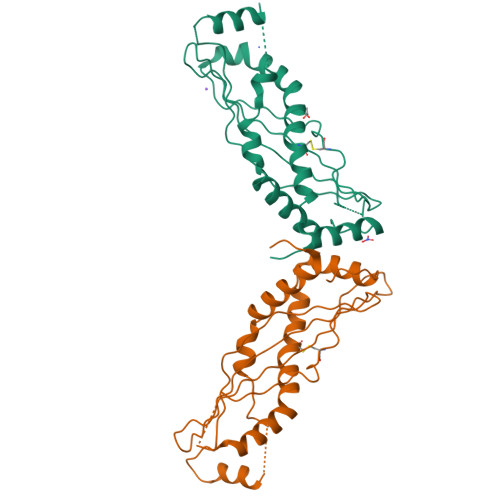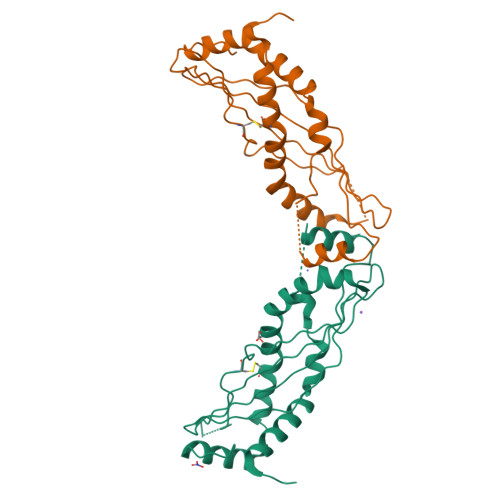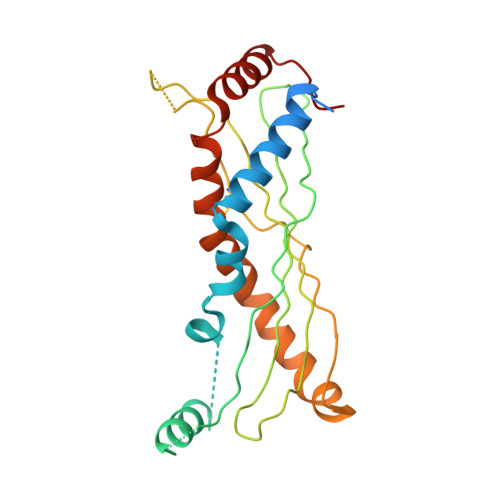Molecular basis for pH-dependent mucosal dehydration in cystic fibrosis airways.
Garland, A.L., Walton, W.G., Coakley, R.D., Tan, C.D., Gilmore, R.C., Hobbs, C.A., Tripathy, A., Clunes, L.A., Bencharit, S., Stutts, M.J., Betts, L., Redinbo, M.R., Tarran, R.(2013) Proc Natl Acad Sci U S A 110: 15973-15978
- PubMed: 24043776
- DOI: https://doi.org/10.1073/pnas.1311999110
- Primary Citation of Related Structures:
4KGH, 4KGO - PubMed Abstract:
The ability to maintain proper airway surface liquid (ASL) volume homeostasis is vital for mucus hydration and clearance, which are essential aspects of the mammalian lung's innate defense system. In cystic fibrosis (CF), one of the most common life-threatening genetic disorders, ASL dehydration leads to mucus accumulation and chronic infection. In normal airways, the secreted protein short palate lung and nasal epithelial clone 1 (SPLUNC1) effectively inhibits epithelial Na(+) channel (ENaC)-dependent Na(+) absorption and preserves ASL volume. In CF airways, it has been hypothesized that increased ENaC-dependent Na(+) absorption contributes to ASL depletion, and hence increased disease. However, this theory is controversial, and the mechanism for abnormal ENaC regulation in CF airways has remained elusive. Here, we show that SPLUNC1 is a pH-sensitive regulator of ENaC and is unable to inhibit ENaC in the acidic CF airway environment. Alkalinization of CF airway cultures prevented CF ASL hyperabsorption, and this effect was abolished when SPLUNC1 was stably knocked down. Accordingly, we resolved the crystal structure of SPLUNC1 to 2.8 Å. Notably, this structure revealed two pH-sensitive salt bridges that, when removed, rendered SPLUNC1 pH-insensitive and able to regulate ASL volume in acidic ASL. Thus, we conclude that ENaC hyperactivity is secondary to reduced CF ASL pH. Together, these data provide molecular insights into the mucosal dehydration associated with a range of pulmonary diseases, including CF, and suggest that future therapy be directed toward alkalinizing the pH of CF airways.
Organizational Affiliation:
Cystic Fibrosis/Pulmonary Research and Treatment Center, Department of Chemistry, Department of Biochemistry and Biophysics, Departments of Prosthodontics and Pharmacology, Department of Microbiology and Immunology, and Department of Cell Biology and Physiology, University of North Carolina, Chapel Hill, NC 27599.





















